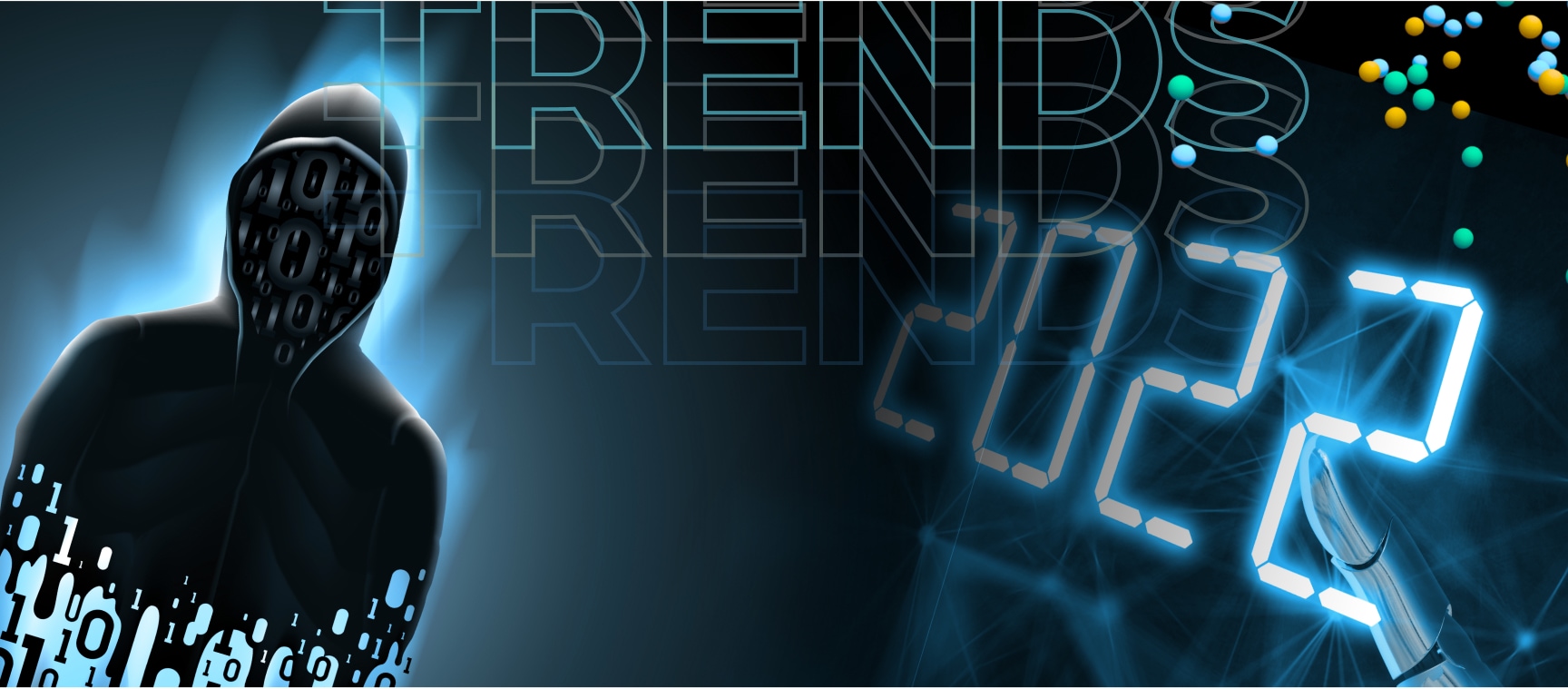The Top 3 Dark Web Trends in 2024 [VIDEO]
Learn how to automate financial risk reports using AI and news data with this guide for product managers, featuring tools from Webz.io and OpenAI.

Organizations are constantly expanding their online presence without realizing how this expands their exposure. Cloud services, third-party integrations, remote access tools, and shadow IT have significantly increased the external attack surface, making traditional security measures insufficient.
Threat actors continuously scan for vulnerabilities, misconfigurations, and exposed assets that serve as easy entry points into corporate environments. Organizations who do not have full visibility into all of their external risks are forced to react to threats instead of preventing them. External attack surface management (EASM) platforms change that.
EASM gives an organization the chance to examine their digital footprint from an attacker’s eyes. EASM helps security teams uncover unknown, unmanaged, or misconfigured assets before they become security incidents.
This blog post explores the key concepts of EASM, how it works, real-world examples of security failures that could have been prevented with EASM, and why organizations must integrate it into their cybersecurity strategy.
To grasp EASM’s full impact, let’s first define the differences between internal and external attack surfaces.
Effective cybersecurity requires a comprehensive approach to managing an organization’s attack surface. While Internal Attack Surface Management focuses on securing assets within the organization’s perimeter, External Attack Surface Management (EASM) takes an outward-facing approach, identifying threats that exist beyond traditional security boundaries.
Internal Attack Surface Management, where most cybersecurity budget has traditionally been focused, is centered on securing assets within an organization’s network, including:
Traditional security tools such as firewalls, SIEM, EDR, and internal vulnerability scanners play a critical role in securing internal systems. However, their scope generally doesn’t extend to discovering and managing the organization’s external-facing assets and potential exposures—a task specifically addressed by External Attack Surface Management (EASM).
Unlike internal security tools, EASM continuously maps, monitors, and mitigates risks across an organization’s external attack surface, providing an attacker’s perspective. It identifies public-facing assets that could be exploited, such as:
Now, let’s explore how EASM works.
EASM operates by continuously discovering, monitoring, and analyzing an organization’s external-facing assets. EASM provides the continuous, real-world visibility needed to make your continuous threat exposure management (CTEM) program truly effective. By showing you your external attack surface through an attacker’s eyes, EASM fuels the crucial Discovery and Prioritization stages, ensuring your efforts are focused on the internet-facing risks that matter most. It’s the engine that turns CTEM strategy into actionable defense.
To manage the external attack surface effectively, security teams first need comprehensive visibility – knowing precisely what assets the organization exposes. This aligns directly with the CTEM discovery stage. EASM tools provide this foundational visibility by scanning the internet from an attacker’s perspective to map all digital assets belonging to the organization. This mapping includes known and unknown domains, subdomains, cloud services, IP addresses, APIs, certificates, and integrations with third parties.
This comprehensive mapping process leverages a combination of techniques to achieve real-world visibility:
An organization’s external attack surface constantly changes. Therefore, continuously monitoring this dynamic environment is essential for an effective CTEM program and ensures the discovery stage remains current. EASM tools perform ongoing scans, acting as persistent eyes on the external perimeter. These scans detect changes from the outside-in, such as:
Unlike one-time security audits that offer only a snapshot, continuous monitoring provides the up-to-date visibility security teams need to proactively address risks.
Beyond asset identification and monitoring, EASM security performs crucial analysis that evaluates risks to drive the CTEM Prioritization stage. EASM assesses discovered external assets for vulnerabilities and misconfigurations from an attacker’s perspective to determine which exposures pose the most significant threat. It generates prioritized alerts, enabling teams to focus remediation efforts effectively. This includes:
By correlating threat intelligence with specific asset data, EASM helps security teams understand not just what the organization exposes externally, but how attackers could potentially exploit it. This context turns raw data into actionable intelligence that enables proactive mitigation and a truly actionable defense strategy.
Some assets are well-documented and actively monitored, such as official domains, VPN servers, and valid certificates. These are known entities, and security teams are aware of their exposure. However, as organizations scale and adopt new technologies, their attack surface expands with them, and the number of digital assets—including cloud storage, remote access points, and third-party integrations—expands beyond what can be easily tracked.
The real risk lies in the assets you may not realize are exposed or don’t even know exist.
Take, for example, a developer who spins up a cloud-based test environment. Once it has served its purpose, it may remain publicly accessible, unmaintained, and still connected to internal systems, providing an attacker with an easy entry point.
Similarly, misconfigured S3 buckets, databases, or exposed RDP servers can sit unnoticed—until they are exploited. Marketing teams often launch microsites or promotional pages linked to the company’s domain but fail to decommission them after use, leaving them unpatched and vulnerable.
Legacy systems and outdated infrastructure pose another risk, as organizations sometimes leave old VPN gateways, customer portals, or decommissioned servers running without proper security oversight.
Even security teams can unintentionally contribute to the problem. Penetration testing tools, honeypots, or research environments, if misconfigured or left exposed, can provide attackers with valuable intelligence about an organization’s security posture.
This is why EASM is essential—without clear visibility and continuous monitoring, organizations are left reacting to threats instead of preventing them.
To demonstrate the effectiveness of EASM, we can explore real-world incidents where a lack of asset visibility led to breaches:
Organizations often utilize cloud storage services like Amazon S3 to manage vast amounts of data. While these services offer scalability and convenience, misconfigurations—such as leaving storage buckets publicly accessible—can lead to significant data breaches.
In 2022, Pegasus Airlines, a Turkish low-cost carrier, experienced a substantial data breach due to a misconfigured Amazon Web Services (AWS) S3 bucket. This misconfiguration left approximately 6.5 terabytes of sensitive data exposed, equating to around 23 million files. The exposed data included:
EASM’s real time alerting would have notified the security team of the open S3 bucket, allowing them to secure the sensitive data before the breach occurred.
Organizations often create subdomains for specific purposes, such as marketing campaigns or third-party services. Over time, these subdomains may become inactive or forgotten, yet they remain part of the organization’s domain space. Attackers can exploit these neglected assets to conduct malicious activities.
In 2024, a massive campaign named “SubdoMailing” was uncovered, highlighting the risks associated with abandoned or misconfigured subdomains. Attackers hijacked over 8,000 domains and 13,000 subdomains belonging to reputable brands, including MSN, VMware, McAfee, and eBay. By exploiting DNS misconfigurations and dangling CNAME records, they sent millions of spam and phishing emails daily, leveraging the credibility of these trusted brands to bypass security filters and deceive recipients.
EASM would have continuously monitored for misconfigured or inactive subdomains in time for the relevant organizations to decommission them before attackers could hijack them.
Remote Desktop Protocol (RDP) is widely used to allow remote access to systems. However, when RDP services are improperly configured or left exposed to the internet without adequate security measures, they become prime targets for cyber attackers. Threat actors often employ brute-force attacks to gain unauthorized access, subsequently deploying ransomware to encrypt critical data.
In June 2023, security researchers observed that threat actors associated with the Crysis ransomware were also deploying Venus ransomware by exploiting exposed RDP services. The attackers scanned for systems with active and externally accessible RDP services (just like the EASM does), using brute-force or dictionary attacks to obtain weak or default credentials. Upon successful login, they gained control over the system and executed various malicious actions, including the deployment of ransomware. Additionally, they installed tools like Mimikatz to harvest credentials, facilitating lateral movement within the network to compromise additional systems.
EASM would have flagged the open RDP ports, enabling teams to enforce stronger access controls and prevent ransomware attacks.
As organizations expand their digital footprint, their attack surface grows—often in unpredictable ways. Traditional security tools focus on internal defenses, leaving external exposures unchecked.
Cyber attack surface management bridges this gap by continuously mapping, monitoring, and securing public-facing assets before attackers can exploit them.
The real-world examples in this post show how unmanaged, misconfigured, or forgotten assets can lead to devastating breaches. Whether it’s an exposed cloud bucket, a hijacked subdomain, or an open RDP port facilitating ransomware, these blind spots create critical risks.
By eliminating these vulnerabilities, EASM helps security teams take a proactive stance in defending their organization.

Learn how to automate financial risk reports using AI and news data with this guide for product managers, featuring tools from Webz.io and OpenAI.

Watch our cyber team share their key insights from their investigations into the biggest dark web trends in 2022.

We’re back with another video in our Webz Insider video series on everything web data. This week our Content and Communications Manager Yafit Lazar is in the interviewer’s seat as our BDR pro Baruch Katz shares his insights on the latest changes in the cyber world, what he discovered at the latest Infosecurity Europe conference in London and how dark web data has become a hot topic.